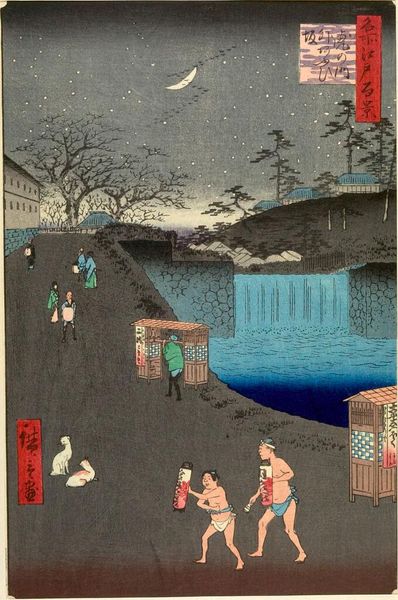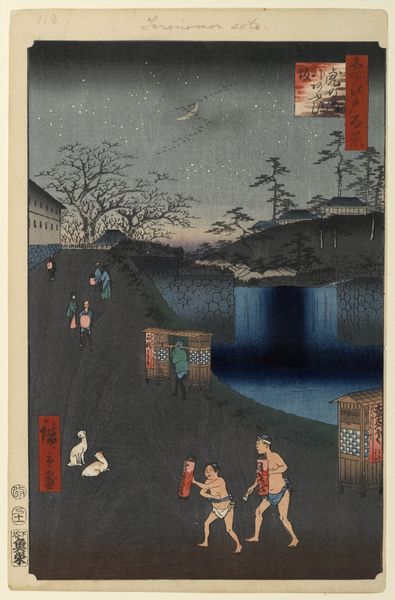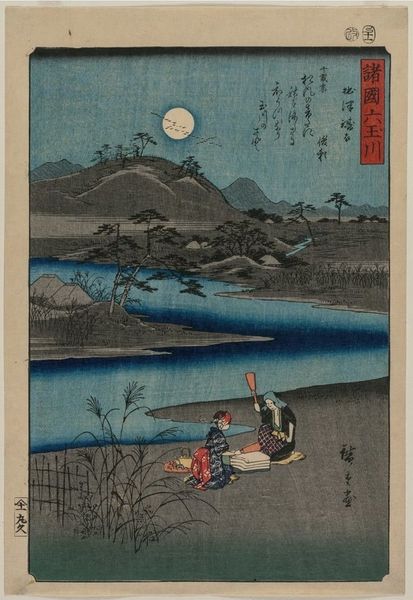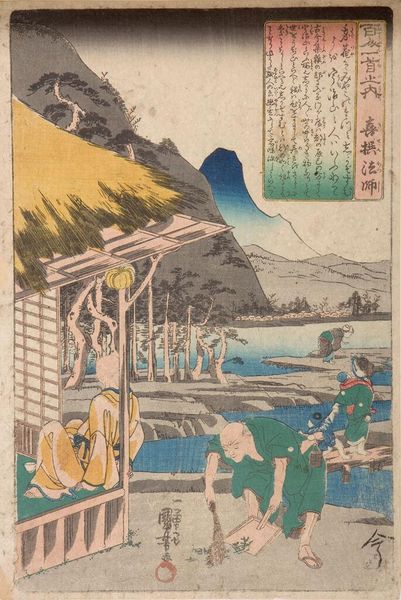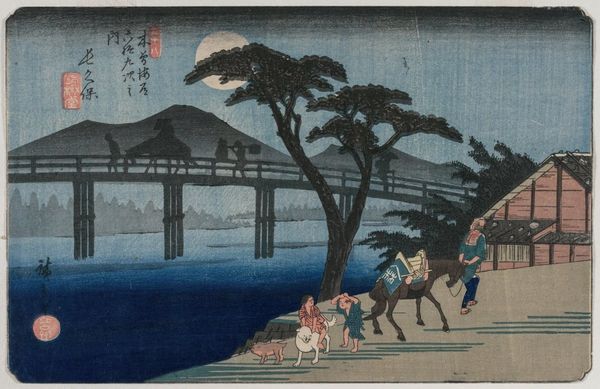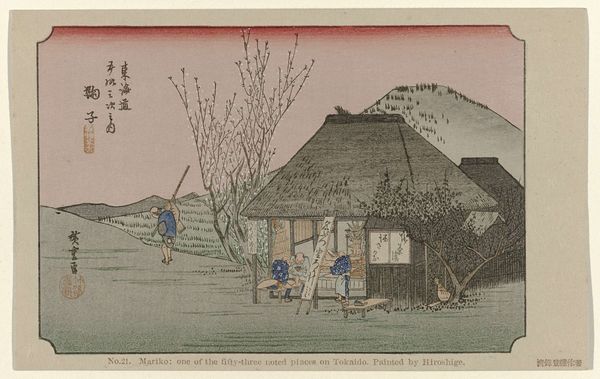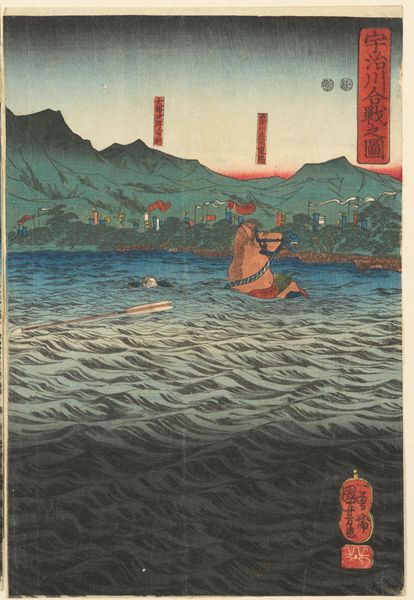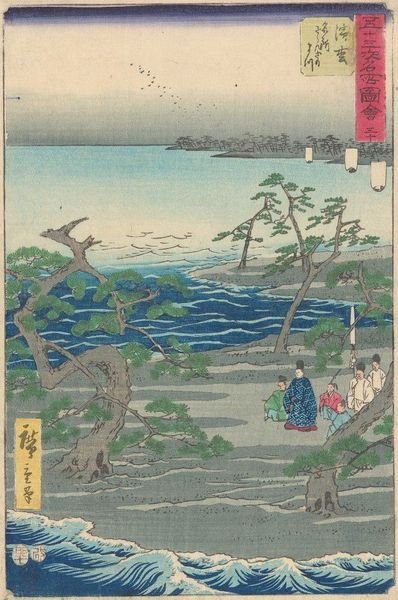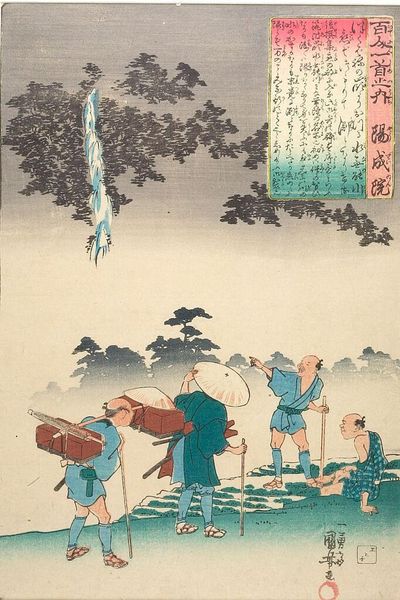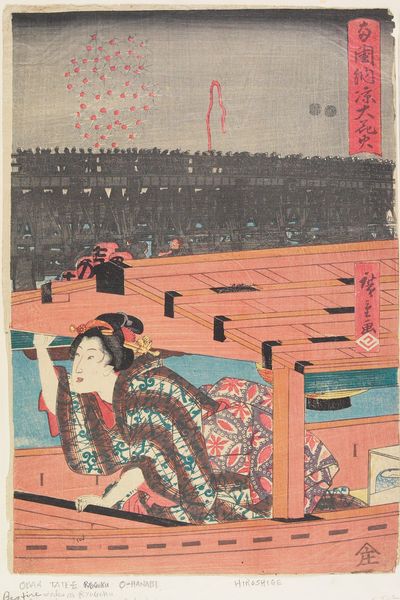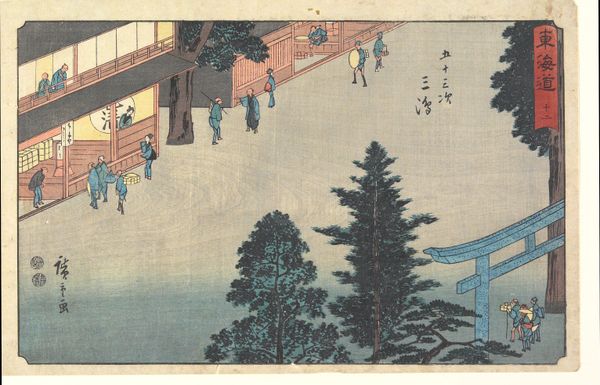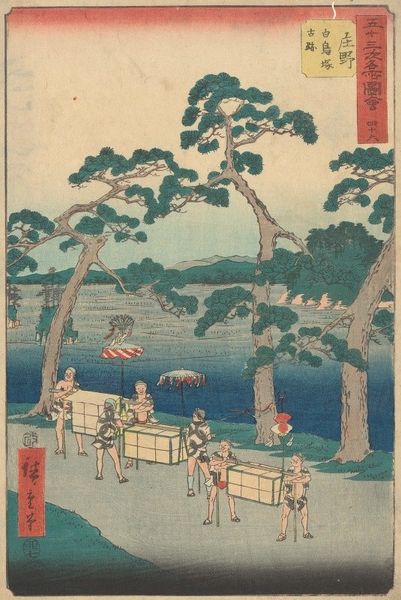![Tora-no-mon-gai; Aoi Hill, Outside the Tiger Gate [Tora-no-mon] by Utagawa Hiroshige](/_next/image?url=https%3A%2F%2Fd2w8kbdekdi1gv.cloudfront.net%2FeyJidWNrZXQiOiAiYXJ0ZXJhLWltYWdlcy1idWNrZXQiLCAia2V5IjogImFydHdvcmtzLzlkOTMyMjE0LWIxYmQtNDI5ZC1hYzE1LTljYWY5OTY5NGI4Yi85ZDkzMjIxNC1iMWJkLTQyOWQtYWMxNS05Y2FmOTk2OTRiOGJfZnVsbC5qcGciLCAiZWRpdHMiOiB7InJlc2l6ZSI6IHsid2lkdGgiOiAxOTIwLCAiaGVpZ2h0IjogMTkyMCwgImZpdCI6ICJpbnNpZGUifX19&w=1200&q=75)
print, watercolor, woodblock-print
#
night
#
water colours
# print
#
asian-art
#
landscape
#
ukiyo-e
#
watercolor
#
woodblock-print
#
cityscape
Copyright: Public Domain: Artvee
Curator: Good evening. Tonight, we'll be discussing Utagawa Hiroshige's "Tora-no-mon-gai; Aoi Hill, Outside the Tiger Gate [Tora-no-mon]," created in 1857. It's a captivating woodblock print that exemplifies the ukiyo-e tradition. Editor: Immediately, what strikes me is the contrasting palette. The deep blues of the night sky set against the soft glow emanating from the lanterns. It creates this pervasive, yet subtle, melancholy. Curator: Indeed. Hiroshige was a master of capturing the ephemeral beauty of everyday life. In this scene, he depicts the area outside the Tiger Gate in Edo, now Tokyo, under the cloak of night. Note the cascading waterfall, an almost ethereal element incorporated into an urban scene. It's as much about showing nature within the urban fabric as documenting real buildings or specific events. Editor: Right, that blending is critical to understanding the piece within its historical context. Consider, too, the figures illuminated by lanterns. They become symbolic actors in a narrative concerning commerce and culture operating even in the dead of night, suggesting the flow of exchange. Curator: And what's fascinating is that while we admire its aesthetic value today, prints like this played a crucial role in disseminating visual information and fostering a sense of collective identity among Edo residents during a period of considerable social transformation and urbanization. Editor: I agree. This artwork encapsulates that delicate balance between documenting reality and projecting an ideal; what spaces are depicted, who occupies those spaces, and what social and power structures those details implicitly portray, all within the rising culture of commercial imagery. The very act of viewing these pieces now places us in a relationship with their past. Curator: It offers an extraordinary glimpse into a bygone era. It reminds us that behind every iconic landscape there’s always a story woven into the sociopolitical fabric. Editor: Absolutely. It highlights that images—even scenes of everyday life—participate actively in reflecting, and, inevitably, in subtly constructing cultural realities.
Comments
No comments
Be the first to comment and join the conversation on the ultimate creative platform.
